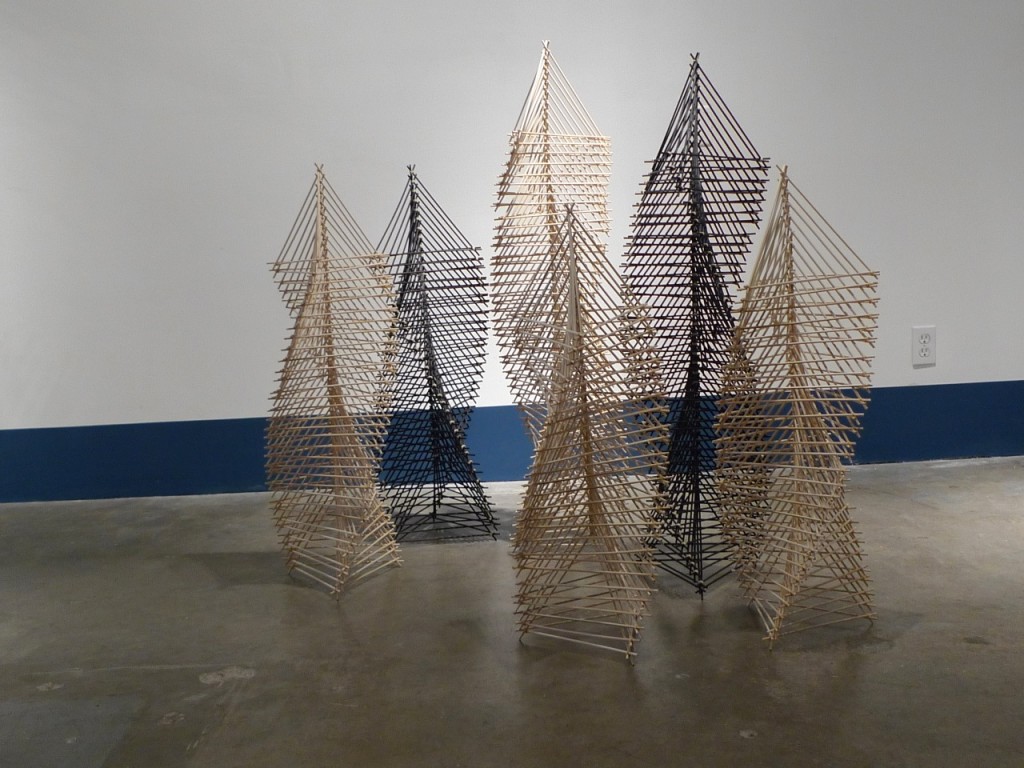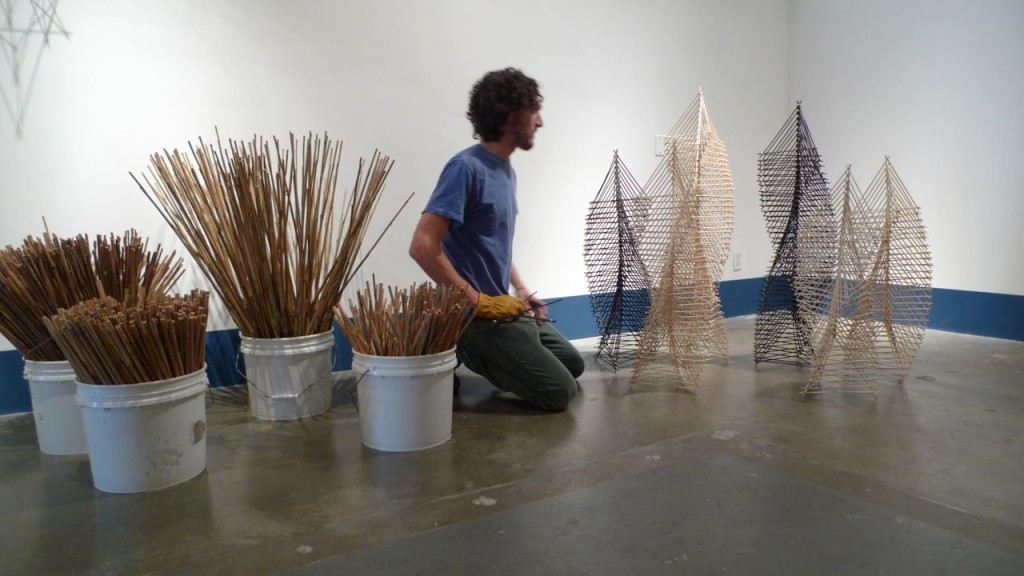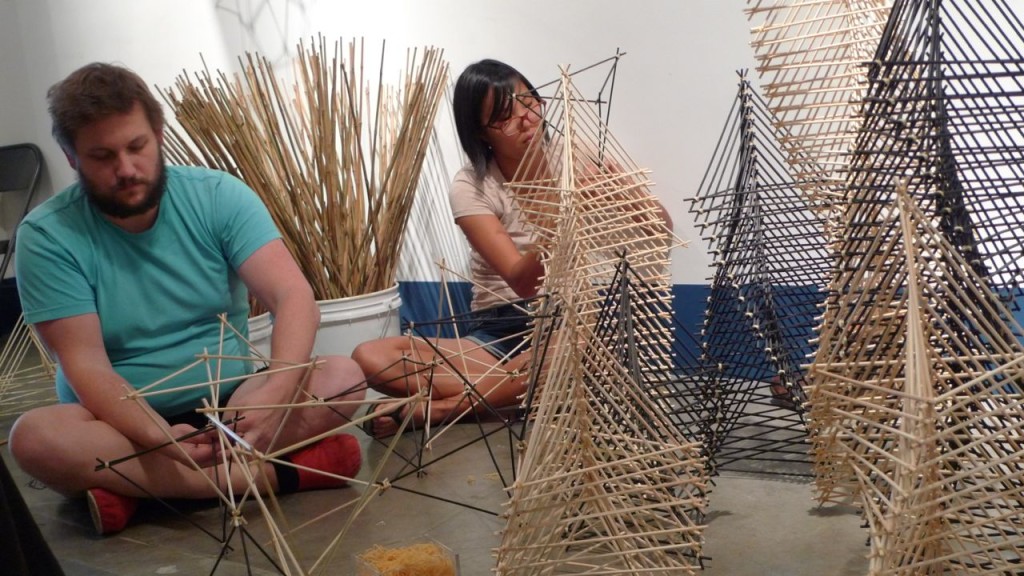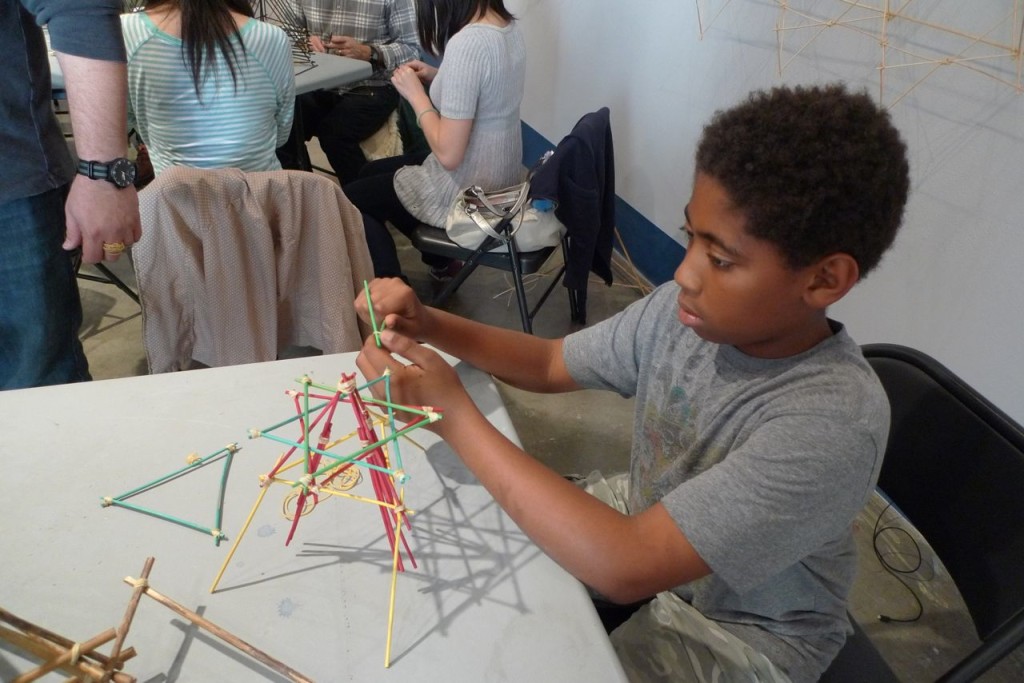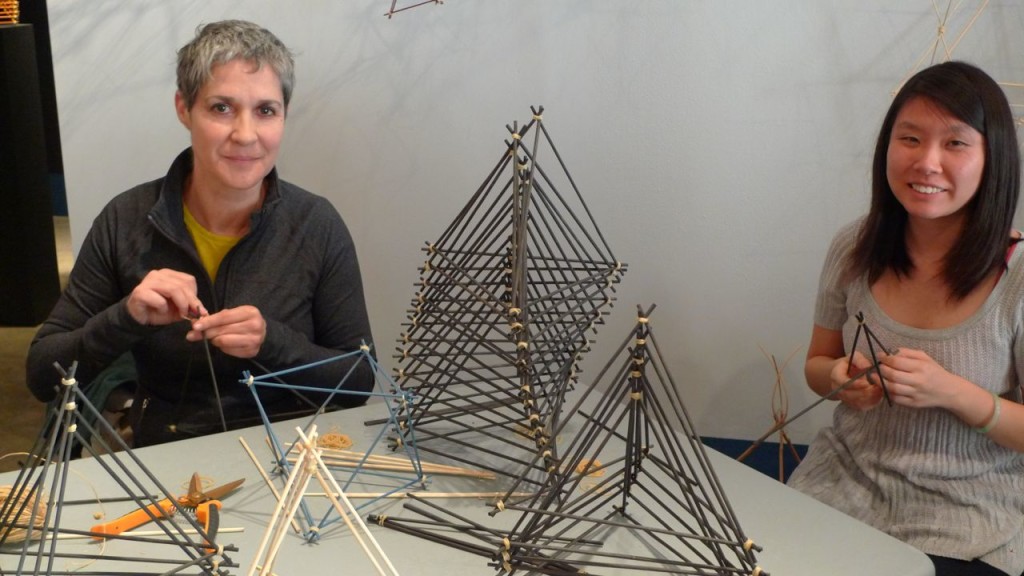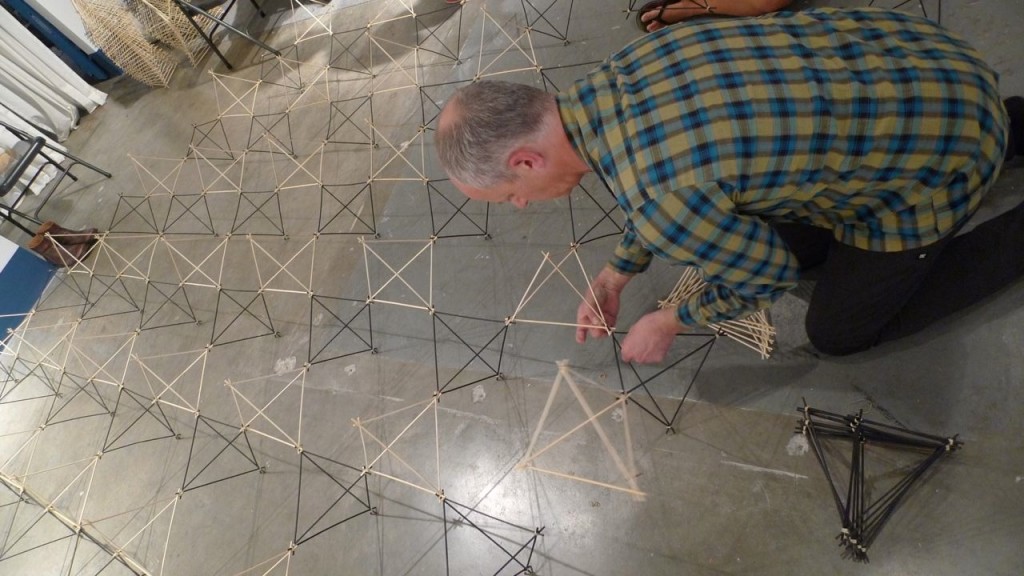These elegant towers of stacked tetrahedrons are the modular units from which we’ll be constructing a large-scale-model in Jake’s building workshop this afternoon. Made from 12 inch bamboo sticks, each tetrahedron consists of six sticks arranged with either a clockwise or anti clockwise rotation at each vertex. The innate chirality or handedness of the tetrahedra causes stacks of these units to twist into either a clockwise-spiraling triple helix, or an anticlockwise-spiraling triple helix. Chirality also has fundamental consequences for Dotson’s building methodology. If one builds solely from single handed tetrahedrons (what we can call homo-chirality), the resulting large scale structures will naturally curve and ultimately form into balls. If we mix left-handed and right-handed tetrahedrons, flat structures can be achieved. The choice of homo- or hetro-chirality has global architectural consequences.
Below are pictures from the workshop. We were delighted to host a visit from Charles Long’s “Workshop Art” class from the University of California, Riverside. Students proved to be both adept and inventive: some followed Jakes purely algorithmic vision, other branched out on their own and went non-linear.
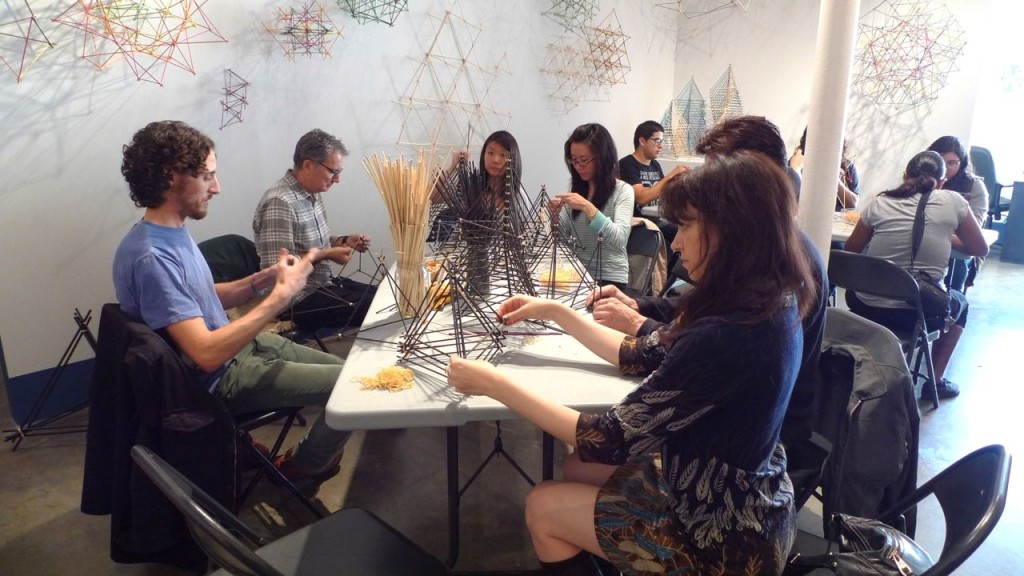
Workshop participants constructing left and rich handed tetrahedrons for assembly into a larger network.
Children typically subvert algorithmic instructions and have no fear about launching off on their own. 9 year old Jaquell Weinraub was no exception; he happily ignored his elders and went about building a starship.
When linking tetrahedrons together, a critical issue is the chirality of the modules. Here, the black tetrahedrons have vertices whose ends spiral in an anti-clockwise fashion, while the white tetrahedrons have vertices that spiral clockwise. By slotting together vertices of alternating chirality one can construct a large flat sheet. Note that the basic lattice structure here is hexagonal – commensurate with a Euclidean surface. Like a flat sheet of paper, these Euclidean trusses can be rolled into a cylinder.
–Margaret Wertheim, Institute For Figuring
